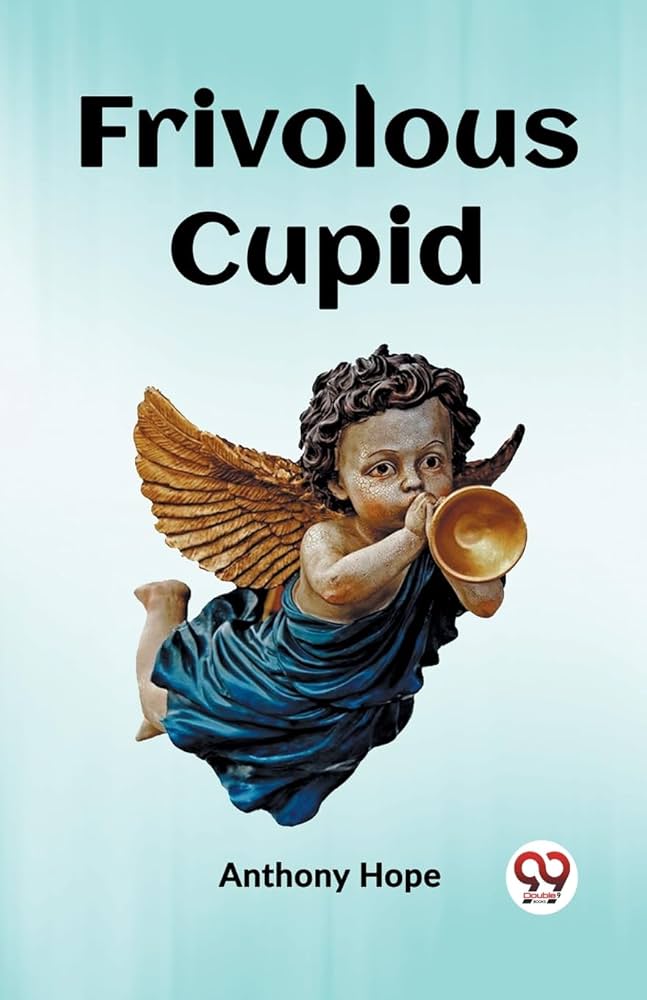Chapter IV — Frivolous Cupid
byChapter IV shifts the focus toward Poltons’ vibrant gathering, where wit, charm, and subtle rivalry shape the interactions among its guests. At the heart of this social setting is Miss Audrey Liston, a novelist whose keen observation turns every moment into potential material. With her sharp eye for detail, she notices emotional currents others overlook, especially the gentle pull forming between Sir Gilbert Chillington and Miss Pamela Myles. As a writer deeply invested in realism, Miss Liston draws from these relationships for her newest work, quietly blending truth with fiction. She becomes both participant and observer, torn between artistic curiosity and the personal consequences of her narrative choices. Each conversation she hears, every glance she catches, adds texture to the evolving story in her mind.
As her inspiration deepens, Miss Liston finds herself unsure whether to guide her fictional couple toward heartbreak or happiness. Her uncertainty mirrors the ambiguity of real emotions unfolding before her. Sir Gilbert, well-meaning yet unaware of his role in her mental novel, offers subtle clues of his interest in Pamela. Pamela, for her part, navigates between aloofness and warmth, giving the budding romance an air of unpredictability. Miss Liston feels the pressure of storytelling ethics: how far can she fictionalize people she knows without distorting their truths? This question nags at her as she struggles with scenes that might soon be mirrored in reality. The writer’s craft becomes an emotional burden rather than an escape, pulling her deeper into the delicate drama around her.
Moments of clarity come not through dramatic declarations, but in the quiet reflection Miss Liston indulges in during solitary walks or late-night revisions. She senses that her writing, though drawn from others, now holds a mirror up to herself. Her envy of Pamela’s unfolding romance isn’t spiteful, but a gentle ache of what she has yet to experience. Observing Gilbert’s sincerity and Pamela’s hesitations, she realizes that love is rarely as tidy as a story arc. It’s messy, unpredictable, often lacking the satisfying symmetry novels provide. And yet, that very unpredictability gives it its weight. Her writing, if honest, must reflect this ambiguity, even if it leaves the reader with more questions than answers.
The gathering at Poltons continues with garden strolls, drawing-room games, and candlelit dinners, but the emotional stakes rise beneath the surface. Miss Liston overhears fragments of conversations—some meant for others, some clearly veiled—and they feed both her curiosity and her caution. A single sentence from Pamela, wistfully delivered, can rewrite a whole imagined chapter. Sir Gilbert, though earnest, seems unaware of how close he stands to both affection and rejection. The narrator watches Miss Liston vacillate between involvement and detachment. Her laughter grows quieter, her smiles more reflective. Art, for her, is no longer a mere hobby—it’s a lens that exposes more than it protects.
As the chapter nears its close, the truth begins to dawn. The plot Miss Liston had hoped to control begins slipping from her fingers. Real people won’t follow her cues, and their choices don’t always reward narrative logic. When Sir Gilbert and Pamela’s understanding matures—silently, through shared glances and meaningful silence—Miss Liston does not feel robbed of an ending but gifted with perspective. The final pages she drafts for her manuscript abandon melodrama. They embrace subtler truths: that attraction can coexist with misreading, that kindness doesn’t guarantee reciprocation, and that love, in its truest form, is a patient unfolding rather than a scripted climax. Her pen slows. A pause follows, not from lack of inspiration but from reverence for what cannot be easily captured.
In the end, Miss Liston’s fictional couple doesn’t neatly match their real-life inspirations. But they carry echoes—gentle shadows of Gilbert’s sincerity, of Pamela’s composed depth, and of her own quiet ache for clarity. Art imitates life, but only partially; it’s the gaps that reveal the soul of a story. Her stay at Poltons ends not with a chapter’s completion but with acceptance that some emotions cannot be written to closure. And perhaps that’s the truest form of storytelling. A narrative that honors uncertainty, crafted by a writer who finally sees her characters—and herself—as they are, not as she hoped they’d be.

